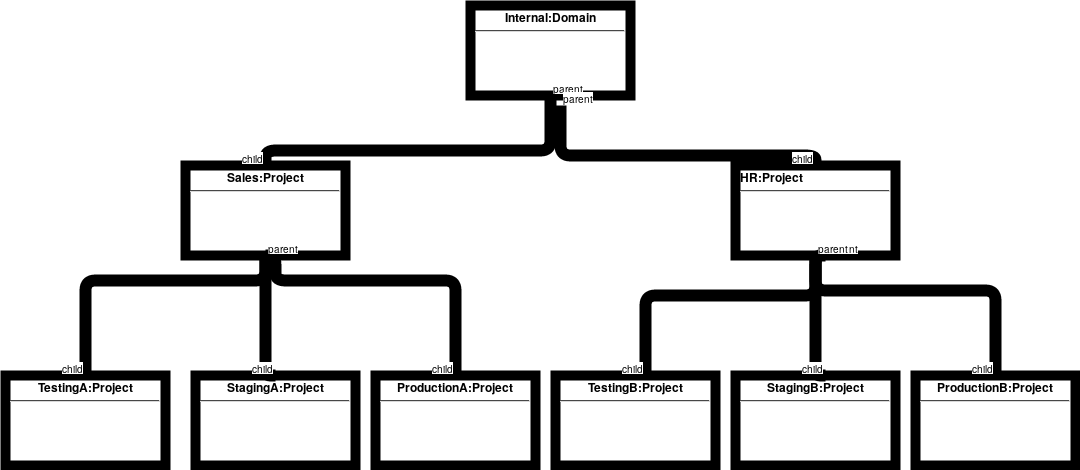Today I tried to use our local OpenStack instance to deploy CloudForms Management Engine (CFME). Our OpenStack deployment has a set of flavors that all are defined with 20 GB Disks. The CFME image is larger than this, and will not deploy on the set of flavors. Here is how I worked around it.
Continue reading
Category Archives: Openstack
Freeing up a Volume from a Nova server that errored
Trial and error. Its a key part of getting work done in my field, and I make my share of errors. Today, I tried to create a virtual machine in Nova using a bad glance image that I had converted to a bootable volume:
The error message was:
{u'message': u'Build of instance d64fdd07-748c-4e27-b212-59e8cef9d6bf aborted: Block Device Mapping is Invalid.', u'code': 500, u'created': u'2018-01-31T03:10:56Z'} |
The VM could not release the volume.
Creating an Ansible Inventory file using Jinja templating
While there are lots of tools in Ansible for generating an inventory file dynamically, in a system like this, you might want to be able to perform additional operations against the same cluster. For example, once the cluster has been running for a few months, you might want to do a Yum update. Eventually, you want to de-provision. Thus, having a remote record of what machines make up a particular cluster can be very useful. Dynamic inventories can be OK, but often it takes time to regenerate the inventory, and that may slow down an already long process, especially during iterated development.
So, I like to generate inventory files. These are fairly simple files, but they are not one of the supported file types in Ansible. Ansible does support ini files, but the inventory files have maybe lines that are not in key=value format.
Instead, I use Jinja formatting to generate inventory files, and they are pretty simple to work with.
Getting Shade for the Ansible OpenStack modules
When Monty Taylor and company looked to update the Ansible support for OpenStack, they realized that there was a neat little library waiting to emerge: Shade. Pulling the duplicated code into Shade brought along all of the benefits that a good refactoring can accomplish: fewer cut and paste errors, common things work in common ways, and so on. However, this means that the OpenStack modules are now dependent on a remote library being installed on the managed system. And we do not yet package Shade as part of OSP or the Ansible products. If you do want to use the OpenStack modules for Ansible, here is the “closest to supported” way you can do so.
Using JSON home on a Keystone server
Say you have an AUTH_URL like this:
$ echo $OS_AUTH_URL http://openstack.hostname.com:5000/v3 |
And now you want to do something with it. You might think you can get the info you want from the /v3 url, but it does not tell you much:
$ curl $OS_AUTH_URL {"version": {"status": "stable", "updated": "2016-10-06T00:00:00Z", "media-types": [{"base": "application/json", "type": "application/vnd.openstack.identity-v3+json"}], "id": "v3.7", "links": [{"href": "http://openstack.hostname.com:5000/v3/", "rel": "self"}]}}[ayoung@ayoung541 salab]$ |
Not too helpful. Turns out, though, that there is data, it is just requires the json-home accepts header.
Upstream First…or Second?
From December 2011 until December 2016, my professional life was driven by OpenStack Keystone development. As I’ve made an effort to diversify myself a bit since then, I’ve also had the opportunity to reflect on our approach, and perhaps see somethings I would like to do differently in the future.
Continue reading
Fixing Bug 96869
Bug 968696
The word Admin is used all over the place. To administer was originally something servants did to their masters. In one of the greater inversions of linguistic history, we now use Admin as a way to indicate authority. In OpenStack, the admin role is used for almost all operations that are reserved for someone with a higher level of authority. These actions are not expected to be performed by people with the plebean Member role.
Why Quotas are Hard
A quota is a numerical limit on a group of resources. Quotas have to be both recorded and enforced.
We had a session at the summit this past week about hierarchical quotas and, if I took anything away from it, it is that quotas are hard.
Keystone supports a project hierarchy. Here’s a sample one for you:

Using the OPTIONS Verb for RBAC
Lets say you have a RESTful Web Service. For any given URL, you might support one or more of the HTTP verbs: GET, PUT, POST, DELETE and so on. A user might wonder what they mean, and which you actually support. One way of reporting that is by using the OPTION Verb. While this is a relatively unusual verb, using it to describe a resource is a fairly well known mechanism. I want to take it one step further.
Continue readingBarely Functional Keystone Deployment with Docker
My eventual goal is to deploy Keystone using Kubernetes. However, I want to understand things from the lowest level on up. Since Kubernetes will be driving Docker for my deployment, I wanted to get things working for a single node Docker deployment before I move on to Kubernetes. As such, you’ll notice I took a few short cuts. Mostly, these involve configuration changes. Since I will need to use Kubernetes for deployment and configuration, I’ll postpone doing it right until I get to that layer. With that caveat, let’s begin.
Continue reading
